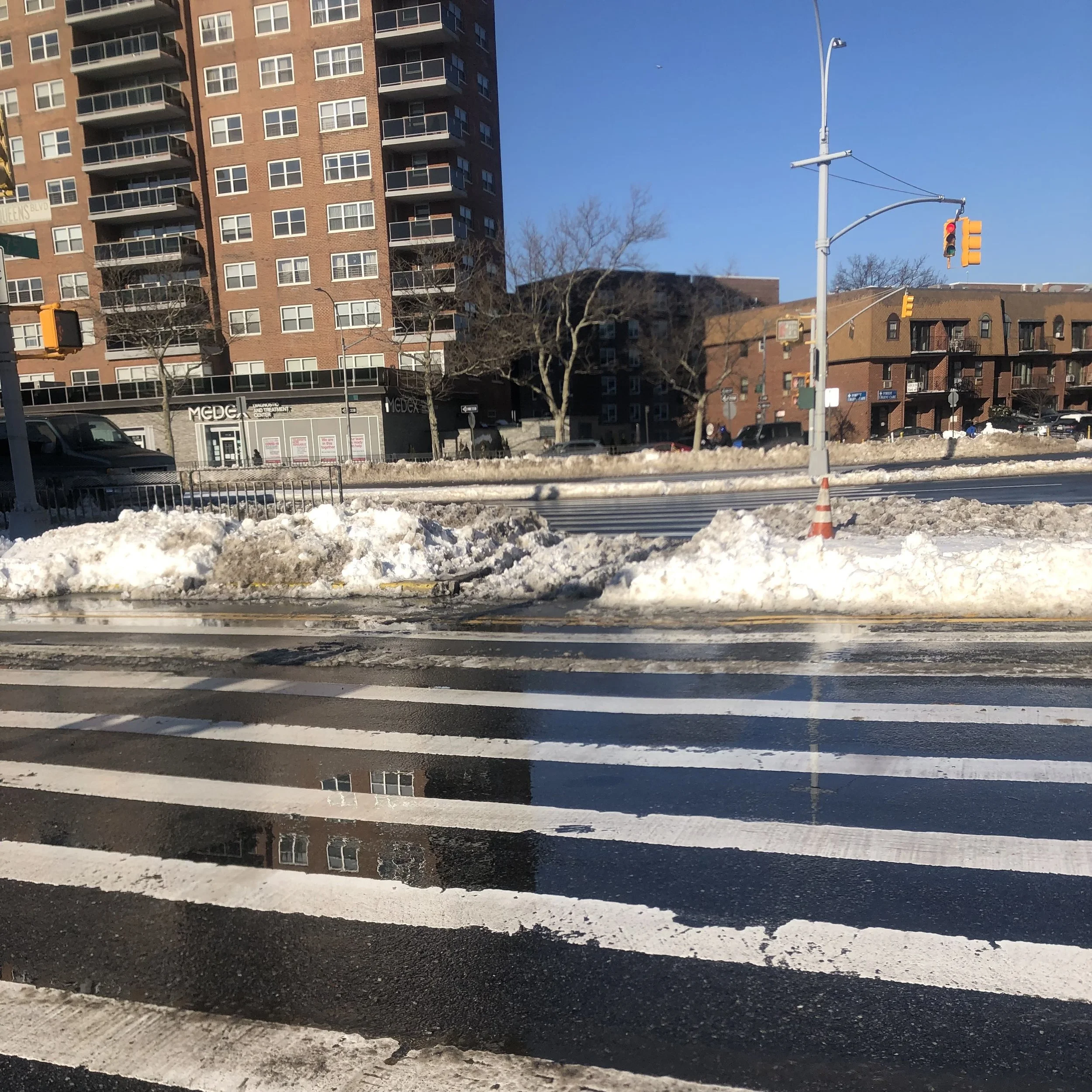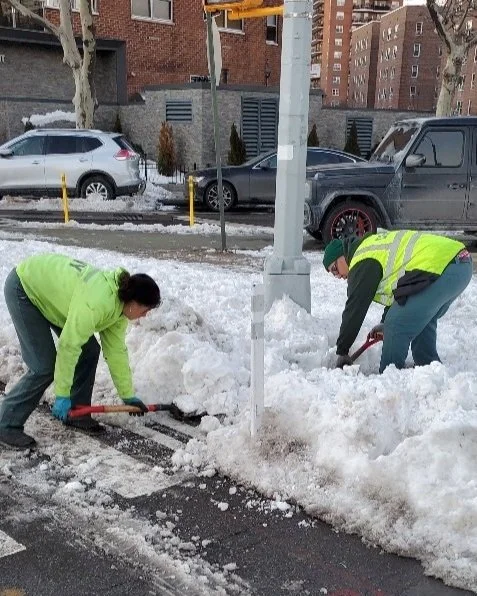Snow buildup on Queens walkways hinders mobility for some
/Advocates say snow-covered crosswalks create a barrier to travel for individuals with mobility issues. Eagle file Photo by Rachel Vick
Slush jumping may be a staple of the Queens winter olympics, but for some residents the puddles prove to be an obstacle that, at best, poses difficulty beyond getting socks wet and, at worst, a dangerous or impassable barrier.
On Sunday morning, after the borough saw nearly a foot of snow and as businesses, drivers and residents began to shovel, crosswalk medians across Queens Boulevard were still buried.
Pedestrians were left to trudge through the untouched snow, or traverse grey sludge in the middle of the wide street.
“Whenever there's a snowstorm in the city this is something we hear about,” said Jeff Peters, spokesperson for Center for Independence of the Disabled New York. “During a storm, curb cuts seem to often seem to be covered with snow. Whether this is due to plowing, shoveling by residents or business owners, or a lack of snow removal, this can make it difficult for people to pass, especially those who use wheelchairs.”
Peters said that “inclusivity/accessibility training may be beneficial” for those responsible for snow removal in order to ensure pathways and clearances are not only done in a timely manner, but are sufficient for those using accessibility aids.
“Imagine a situation where you head out only to have to turn back due to an uncrossable path, or even worse, getting stuck in the snow or ice,” he added. “They must understand that paths need to be a certain width and that curbs simply cannot be covered.”
For Jean Ryan, president of Disabled In Action of Metropolitan NY, under-shoveled streets are a consistent part of her winter experience. Once, she was stuck at home for more than a month because of other people’s snow-covered sidewalks.
“Snow, especially on sidewalks that are not shoveled at all or just have a narrow footpath and walls of snow at bus stops and on top of pedestrian ramps greatly impacts anyone with a mobility disability, and many other people, too,” she told the Eagle. “We have to stay home and miss work or school and we are unable to run errands or visit family or shop for food. Wheelchairs and walkers, crutches, canes, shopping carts, strollers, and rolling suitcases cannot pass.”
Jurisdiction for removal on city-owned property varies depending on the situation — DOT handles some areas because of the elevated train, but DSNY handles clearing the Forest Hills area along Queens Boulevard.
Sanitation workers and contracted laborers have to clear crosswalks and hard-to-reach spots by hand. Photo courtesy of DSNY
“We are on it, and we appreciate the patience of all New Yorkers as we work to clear many areas by hand,” a DSNY spokesperson told the Eagle.
By Monday night, the crosswalk near 75th Avenue had been cleared, according to the rep.
There are more than two dozen snow laborers working alongside sanitation workers in Queens to clear areas inaccessible to plows, and the work will continue into Wednesday, they added.
Any resident who sees a public area that needs to be cleared of snow or ice for safety reasons should call 311 and anyone interested in joining the team of snow laborers can call 311 or visit nyc.gov/snow.





